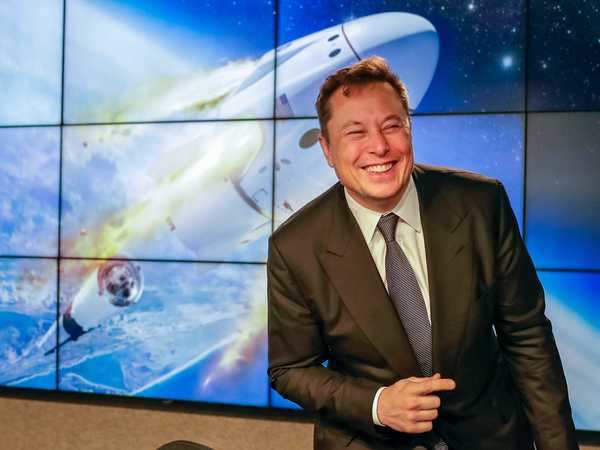Home
News
SpaceX is preparing to launch its first people into orbit on Wednesday using a new Crew Dragon spaceship. NASA astronauts Bob Behnken and Doug Hurley will pilot the commercial mission, called Demo-2.
SpaceX is preparing to launch its first people into orbit on Wednesday using a new Crew Dragon spaceship. NASA astronauts Bob Behnken and Doug Hurley will pilot the commercial mission, called Demo-2.
Read

Elon Musk, founder, CEO, and chief engineer/designer of SpaceX speaks during a news conference.John Raoux/AP Photo
SpaceX is preparing to launch its first people into orbit on Wednesday using a new Crew Dragon spaceship.NASA astronauts Bob Behnken and Doug Hurley will pilot the commercial mission, calledDemo-2 .- But the rocket company, founded by
Elon Musk in 2002, first needed to test-fire its rocket and get permission from NASA and even other countries before attempting the launch. - On Friday, SpaceX checked off both boxes, leaving one final pre-launch review on Monday before the mission can leave Earth.
SpaceX, the rocket company founded by Elon Musk in 2002, is steamrolling toward its first-ever rocket launch of people into orbit.
The NASA-funded commercial mission is called Demo-2 and will fly two passengers: seasoned NASA astronauts Bob Behnken and Doug Hurley.

"We are now preparing for a launch in five short days," NASA administrator Jim Bridenstine said during a televised press briefing on Friday, later adding: "We are a go."
Musk: It's taken 'probably 10,000 meetings' and tests to get here

The first milestone SpaceX achieved was a flight readiness review. Such pre-launch meetings are typically long, as stakeholders comb for any final issues and think of ways to reduce risk. When people are on the line, though, such reviews become even more painstakingly detailed.
"Everybody in the room was very clear that now is the time to speak up if there are any challenges. And there were," Bridenstine said.
Kirk Shireman, who manages the space station program at NASA's Johnson Space Center, said Roscosmos in 2019 made SpaceX aware of a "very, very remote possibility of a failure" with the Crew Dragon that might cause "catastrophic damage" when docking to the ISS.
"SpaceX said we understand, and we'll make a modification," Shireman added, noting the unspecified issue was resolved to Russia's satisfaction with the new Crew Dragon ship for Demo-2.
The meeting lasted nearly two workdays, but SpaceX came out the other end with permission.

Luckily for Musk, that should be the final meeting on the path to launch.
"There might have been 10,000 meetings" to get to this point, Musk said on May 17 for a Bloomberg story by Ashlee Vance. "There are probably 10,000 tests of one kind or another that have taken place."NASA: 'We're going to stay hungry until Bob and Doug come home'

Whatever the risk of Demo-2 may be, Behnken and Hurley — who SpaceX's president and COO, Gwynne Shotwell, has described as "badass" dads, test pilots, and astronauts — said they're ready to fly.
"I think we're really comfortable with it," Behnken told Business Insider just after the flight review finished on Friday. He added that, by working with SpaceX on Crew Dragon for roughly five years, he and Hurley have more insight into the ways the mission could fail "than any crew has in recent history, just in terms of understanding the different scenarios that are at play."
Lueders said no amount of reviews and tests would stop the team from continuing to imagine other possible problems and improve solutions for known issues.
"We're going to stay hungry until Bob and Doug come home," Lueders said. "Our teams are scouring and thinking of every single risk that's out there, and we've worked our butt off to buy down the ones we know of, and we'll continue to look — and continue to buy them down — until we bring them home."
SpaceX is preparing to launch its first people into orbit on Wednesday using a new Crew Dragon spaceship. NASA astronauts Bob Behnken and Doug Hurley will pilot the commercial mission, called Demo-2.
![SpaceX is preparing to launch its first people into orbit on Wednesday using a new Crew Dragon spaceship. NASA astronauts Bob Behnken and Doug Hurley will pilot the commercial mission, called Demo-2.]() Reviewed by Facts
on
May 24, 2020
Rating: 5
Reviewed by Facts
on
May 24, 2020
Rating: 5